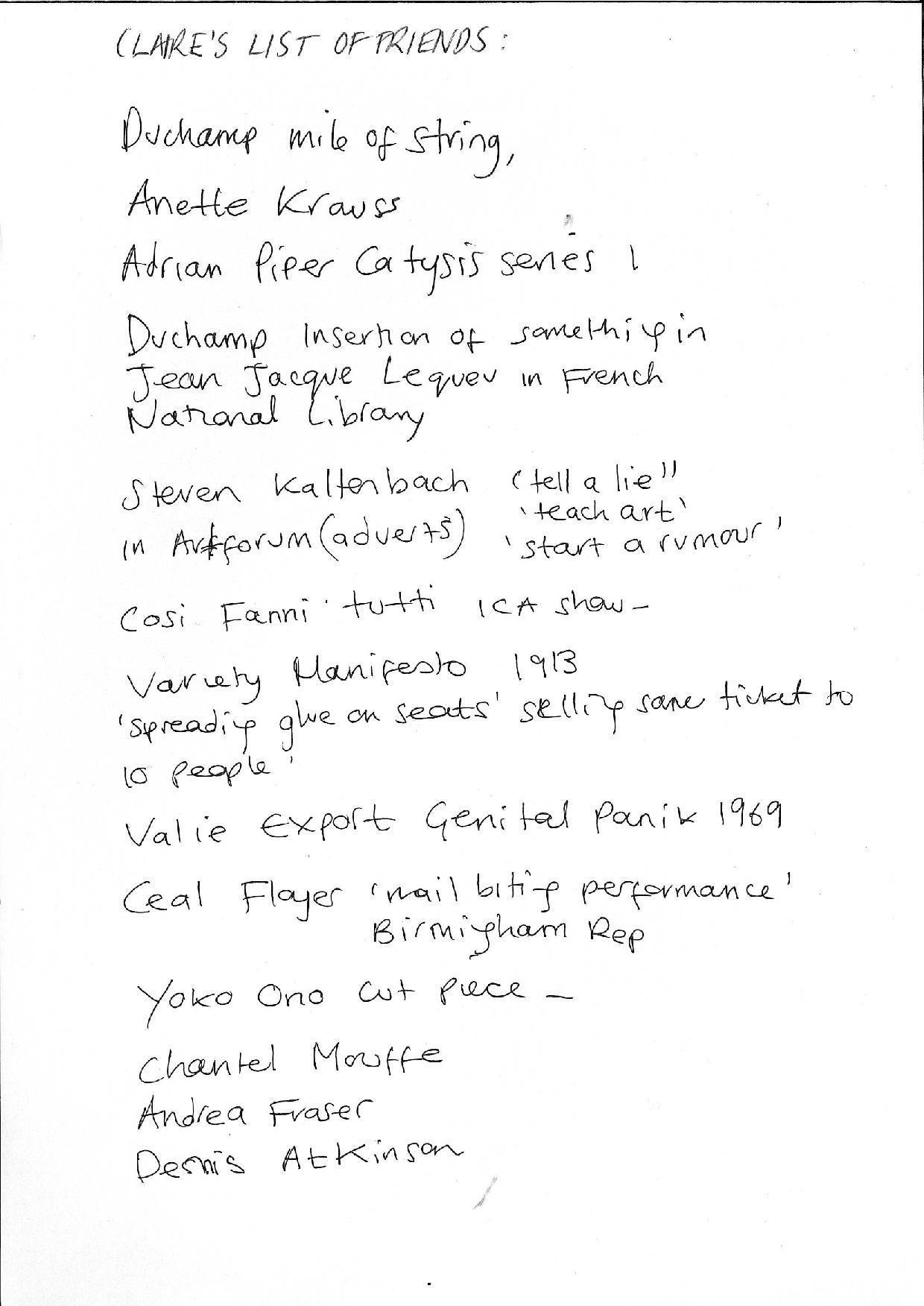Benjamin, W. (2007) Archives. London: Verso.
Dennett, D. (2014) Intuition Pumps and Other Tools for Thinking. London: Penguin.
Elkins, J. (1999) The Object Stares Back: On the Nature of Seeing. Boston: Thomson Learning.
Fisher, E. and Fortnum, R. (2013) On Not Knowing: How Artists Think. London: Black Dog.
Gauntlett, D. (2011) Making is Connecting: The Social Meaning of Creativity, from DIY and Knitting to YouTube and Web 2.0. Cambridge: Polity Press.
Godfrey, M., Biesenbach, K. and Greenberg, K. (eds) (2010) Francis Alys: A Story of Deception. London: Tate Publishing.
Elms, A and Huberman, A. (2011) Stop.Stop.Stop.Stop. New York: The Artist’s Institute. Available online.
Huberman, A. (2007) ‘I (not) love information’ in Afterall, Autumn/Winter 2007. Available online.
Huberman, A. (2011) ‘Take Care’ in Abu ElDahab, M. Choi, B. and Pethick, E. (eds) (2011) Circular Facts. New York: Sternberg Press. Available online.
Huberman, A. (2007) Naïve Set Theory. Available online.
Ingold, T. (2013) ‘The Maze and the Labyrinth: Walking and the Education of Attention’ in Walk-On: From Richard Long to Janet Cardiff. Art Editions North, University of Sunderland.
Ingold, T. (2013) Making: Anthropology, Archaeology, Art and Architecture. Abingdon: Routledge.
Kaprow, A. (1996) Essays on the Blurring of Art and Life. Berkeley: University of California Press.
Kester, G. (2004) Conversation Pieces. Berkeley: University of California Press.
Kharms, D. (2006) Incidences. London: Serpent’s Tail.
Laing, R. D. (1972) Knots. London: Vintage Books.
Magee, B. (2000) The Great Philosophers: An Introduction to Western Philosophy. Oxford: Oxford Paperbacks.
Mollin, D. and Reardon, J. (eds) (2009) Ch-ch-ch-changes: Artists Talking About Teaching. London: Ridinghouse Publishers.
Munari, B. (2009) Design as Art. London: Penguin.
O’Doherty, B. (2008) Studio and Cube: On the Relationship between Where Art is Made and Where Art is Displayed. Princeton: Princeton Architectural Press.
Pallasmaa, J. (2009) The Thinking Hand: Existential and Embodied Wisdom in Architecture. London: John Wiley & Sons.
Perec, G. (2009) Thoughts of Sorts. Boston: David R. Godine Publishers.
Pile, S. and Thrift, N. (2000) City A-Z: Urban Fragments. Abingdon: Routledge.
Raunig, G. (2010) A Thousand Machines: A Concise Philosophy of the Machine as Social Movements. Semiotext(e).
Schmitz, E. (2010) ‘Some Turn and Some Don’t (on setups)’ in O’Neill, P. and Wilson, M (eds) Curating and the Educational Turn. London: Open Editions and Amsterdam: de Appel.
Sennett, R. (2013) Together: The Rituals, Pleasures and Politics of Cooperation. London: Penguin.
Sennett, R. (2009) The Craftsman. London: Penguin.
Wesseling, J. (ed) (2011) See It Again, Say It Again: The Artist as Researcher. Amsterdam: Valiz.
Zizek, S. (2014) Event: Philosophy in Transit. London: Penguin.
